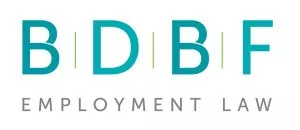In order to successfully establish indirect discrimination, claimants do not have to prove the reason why a practice puts their affected ethnicity, gender, etc. at a particular disadvantage.
The Supreme Court has considered two cases concerning indirect discrimination. The first, Essop, concerned the Home Office's Core Skills Assessment test, which had to be completed successfully in order to progress past a certain level of seniority. The Claimants were a group of employees from black and minority ethnic backgrounds over the age of 35; on the basis of statistical evidence, they argued that they as a group were less likely to pass the test, and were therefore at a particular disadvantage.
The second, Naeem, concerned the Prison Service's pay structure, which contained a scale based in large part on length of service. The Prison Service had only begun employing non-Christian chaplains in 2002 (prior to that, they had been engaged on a sessional basis). Mr Naeem, a Muslim chaplain who began his employment in 2004, argued that the length of service criterion therefore put Muslim chaplains at a particular disadvantage.
Considering these cases, the Supreme Court held that there is no need for Claimants to prove the reason why a particular practice puts a group at a particular disadvantage. It was therefore not a problem that the Claimants in Essop had not done so. What was instead necessary was to show that the disadvantage was caused by the practice (as opposed to something unconnected, such as not turning up for the test), and the statistics the Claimants had put forward in relation to test results for black and minority ethnic staff over the age of 35 were evidence of that. The "context factor" for the disadvantage could involve all sorts of things, including genetics (such as a height requirement), social norms, or traditional employment practices.
The Supreme Court also held that the "context factor", which, in Naeem, was the shorter average length of service of Muslim chaplains, need not be related to the protected characteristic. By analogy, it reasoned that there is nothing peculiar to being a woman which explains why they usually take a larger share of caring responsibilities.
These clarifications are helpful to Claimants seeking to establish indirect discrimination. However, the Supreme Court also emphasised that an employer will still always have the opportunity to show that its practice was justified, and therefore not discriminatory. This was the outcome in Naeem, as it was legitimate and proportionate for the Prison Service to reward longer service with higher pay.
Essop and others v Home Office (UK Border Agency); Naeem v Secretary of State for Justice [2017] UKSC 27
The content of this article is intended to provide a general guide to the subject matter. Specialist advice should be sought about your specific circumstances.

